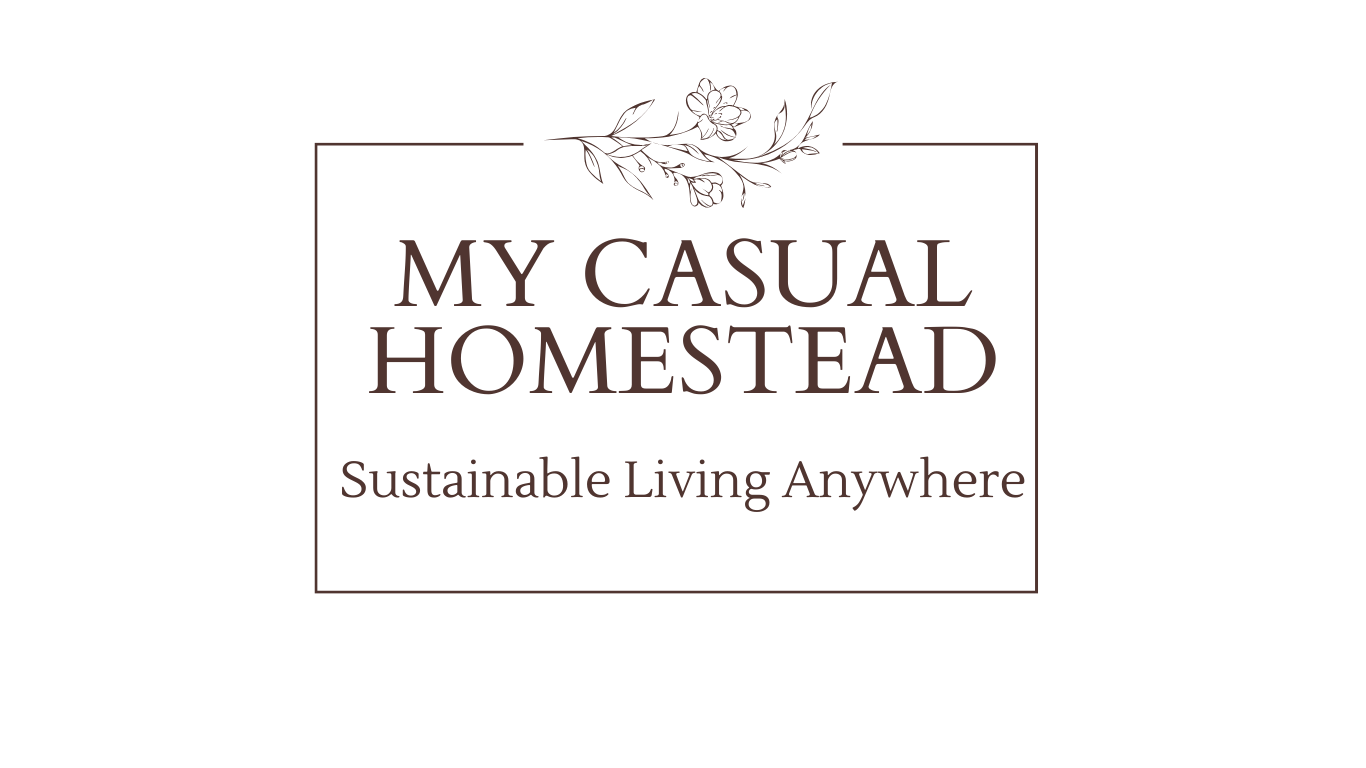It’s the start of apple season, even up north here in Fairbanks. That means it’s the start of eating fresh apples and making homemade apple pies, applesauce, dried apples, apple cider, and apple cider vinegar. Fairbanks is a tough place to grow apples. Below -40F temperatures make growing a challenge although there have been great strides in recent years in successfully growing apples in Interior Alaska, apple trees other than crab apples that is. I, unfortunately, are not swimming in an abundance of apples, because I only bought my apple trees this year, other fruit such as blueberries for pie yes, apples no. But I always make sure I harvest enough local apples for apple cider vinegar.
Our dad, harvesting apples from trees in our backyard.
The following apple cider vinegar recipe makes about 3/4 of a gallon of vinegar. If I pick and buy my apples from the local and only apple orchard near Fairbanks, Clair’s Cultivation, then I bet this recipe costs me ~$10.00. This is compared to buying a gallon of organic Bragg’s Apple Cider Vinegar for $35.00 in Fairbanks. As a bonus apple cider vinegar is fun to make and requires a minimal amount of time and skill at fermenting. This amount of vinegar lasts me almost a year. I make sure and save the remaining two cups to use as a starter for the next batch.
Fermenting does not require special equipment, just a non-reactive container that holds your vegetables fully submerged in the brine. With that said I love my fermenting crock, it takes the guesswork out of fermenting and eliminates those pesky problems that fermenting can be prone to such as my favorite, surface mold and/or Kahm yeast (a harmless yeast that appears when a ferment is exposed to air).
Apple Cider Vinegar
This recipe makes about 3/4 of a gallon of apple cider vinegar when complete.
Ingredients
- 1 gallon water
- 2 cups sugar
- 3-4 lbs apples cored and coarsely chopped
- 2 cups apple cider vinegar active starter such as Bragg's
Instructions
-
Combine water, sugar and chopped apples into a 2-gallon ceramic crock.
-
Stir the mixture vigorously for about 3 minutes with a wooden spoon. Cover with a clean cloth and keep at room temperature.
-
Check the contents daily until the mixture bubbles a bit, about 4-7 days. Stir daily.
-
Once the mixture bubbles and creates some foam remove the fruit chunks with a slotted spoon.
-
Stir in the active cider vinegar starter such as Bragg's. Most cider vinegar in the store has been cooked and won't work for this recipe. Cover the crock with a clean cloth and leave at room temperature.
-
Let the mixture sit at room temperature for 2-4 weeks. Check the mixture every other day for acidity. Basically, dip your finger in the mixture and taste it and smell it. When it tastes like vinegar it's done.
-
Pour the vinegar into a 1 gallon bottle such as really clean milk jug or an empty white vinegar jug. Close the lid to stop any further fermentation. Once a month if you don't use it often open the lid and let out the gas. Just in case.
-
Use and enjoy.
Many people are nervous about consuming their fermented food. One of my favorite guidelines for fermenting is you would never eat a bad batch of fermented food. When it goes bad it essentially rots and you will know it.






Great post! I am making apple cider vinegar for the first time this year using apple scraps! Same process, just with scraps instead of apples. So far, it’s been great! Good luck to you 🙂